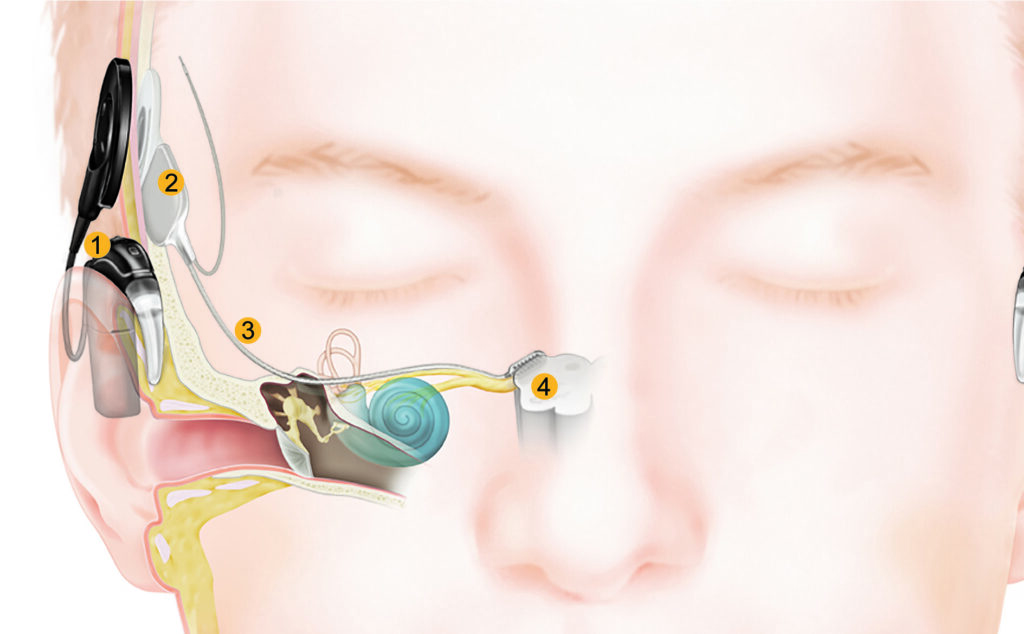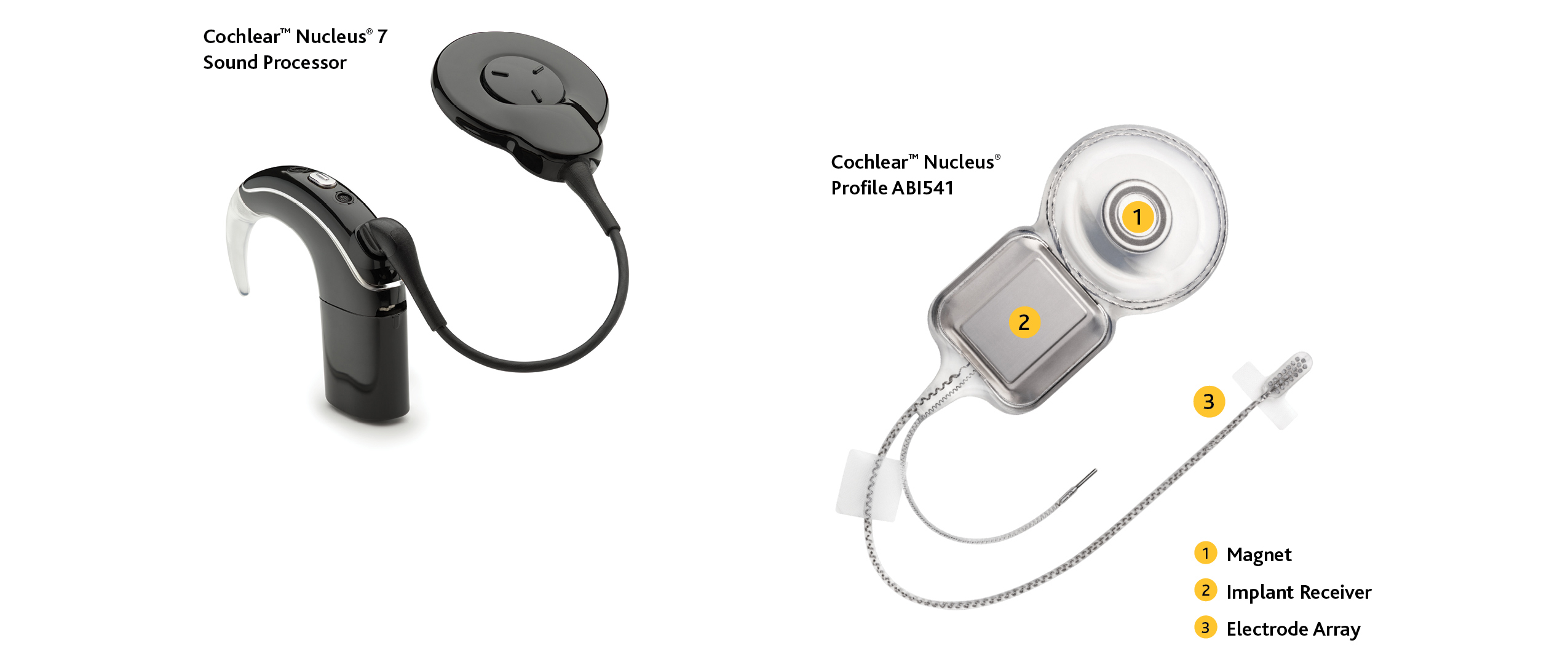This type of implant bypasses the cochlea and auditory nerve to directly stimulate auditory pathways of the brain. Patients that are not good candidates for a cochlear implant due to severely damaged or missing cochleas or auditory nerves may benefit from an auditory brainstem implant.

The ABI bypasses parts of the ear that are absent or no longer work properly by sending signals directly to the brainstem.
- A microphone on the sound processor, worn behind the ear, picks up sounds and converts them to digital information.
- A receiver-stimulator, implanted under the skin, uses the digital information to provide electrical signals to an array of electrodes.
- The electrode array provides electrical stimulation to neurons of the auditory brainstem.

The auditory brainstem implant was first developed to provide sound stimulation to neurofibromatosis type 2 (NF2) patients with bilateral damage to auditory nerves caused by acoustic neuroma tumors. This is still the largest patient population receiving these devices.
Others who can benefit include children and adults with bilateral cochlea and auditory nerve aplasia or hypoplasia; traumatic nerve damage; or cochlear ossification. These conditions cause significant damage to the cochlea and/or auditory nerve, making these patients poor candidates for a cochlear implant.
A surgical approach known as translabyrinthine (through the inner ear) or retrosigmoidal (behind the ear) will be used to gain access to the electrode placement site.
After the electrode is placed on the brainstem, the receiver-stimulator is anchored into the bony wall of the skull.
The electrode array will be tested to ensure activity and stimulation of auditory responses and to make sure the electrode is not stimulating other nerves.
Most patients spend two to four days in the hospital following surgery. They will have a follow-up visit one or two weeks afterward for evaluation of wound healing. Four to six weeks after surgery, the implant will be activated (turned on) and programmed to sound levels appropriate for the patient.
Selecting a provider
When surgery is necessary, picking the most experienced provider is important. This is why patients should seek out auditory brainstem implant experts who:
- Work together as a multidisciplinary team that includes specialists in neurotology, neurosurgery, radiology, audiology, speech and language pathology, and psychology
- Have significant experience performing these procedures in both NF2 and non-NF2 patients
- Offer advanced clinical trials to broaden treatment options
- Participate in innovative research programs that will advance treatments for hearing loss